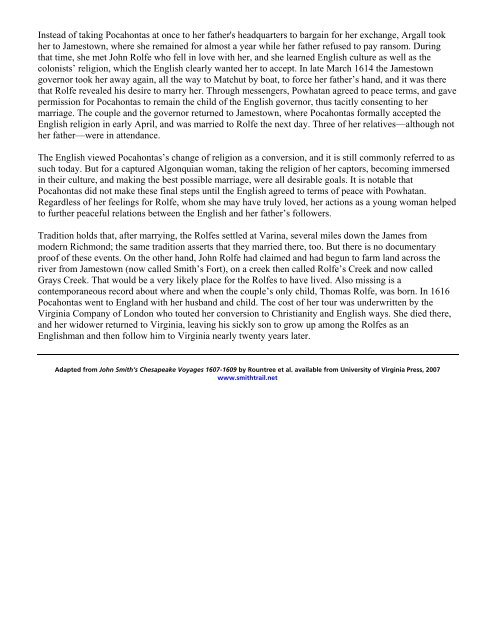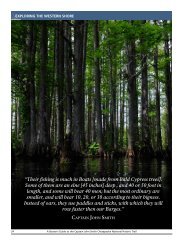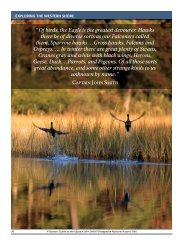Where Does Pocahontas Fit into The Story? - Captain John Smith ...
Where Does Pocahontas Fit into The Story? - Captain John Smith ...
Where Does Pocahontas Fit into The Story? - Captain John Smith ...
You also want an ePaper? Increase the reach of your titles
YUMPU automatically turns print PDFs into web optimized ePapers that Google loves.
Instead of taking <strong>Pocahontas</strong> at once to her father's headquarters to bargain for her exchange, Argall took<br />
her to Jamestown, where she remained for almost a year while her father refused to pay ransom. During<br />
that time, she met <strong>John</strong> Rolfe who fell in love with her, and she learned English culture as well as the<br />
colonists’ religion, which the English clearly wanted her to accept. In late March 1614 the Jamestown<br />
governor took her away again, all the way to Matchut by boat, to force her father’s hand, and it was there<br />
that Rolfe revealed his desire to marry her. Through messengers, Powhatan agreed to peace terms, and gave<br />
permission for <strong>Pocahontas</strong> to remain the child of the English governor, thus tacitly consenting to her<br />
marriage. <strong>The</strong> couple and the governor returned to Jamestown, where <strong>Pocahontas</strong> formally accepted the<br />
English religion in early April, and was married to Rolfe the next day. Three of her relatives—although not<br />
her father—were in attendance.<br />
<strong>The</strong> English viewed <strong>Pocahontas</strong>’s change of religion as a conversion, and it is still commonly referred to as<br />
such today. But for a captured Algonquian woman, taking the religion of her captors, becoming immersed<br />
in their culture, and making the best possible marriage, were all desirable goals. It is notable that<br />
<strong>Pocahontas</strong> did not make these final steps until the English agreed to terms of peace with Powhatan.<br />
Regardless of her feelings for Rolfe, whom she may have truly loved, her actions as a young woman helped<br />
to further peaceful relations between the English and her father’s followers.<br />
Tradition holds that, after marrying, the Rolfes settled at Varina, several miles down the James from<br />
modern Richmond; the same tradition asserts that they married there, too. But there is no documentary<br />
proof of these events. On the other hand, <strong>John</strong> Rolfe had claimed and had begun to farm land across the<br />
river from Jamestown (now called <strong>Smith</strong>’s Fort), on a creek then called Rolfe’s Creek and now called<br />
Grays Creek. That would be a very likely place for the Rolfes to have lived. Also missing is a<br />
contemporaneous record about where and when the couple’s only child, Thomas Rolfe, was born. In 1616<br />
<strong>Pocahontas</strong> went to England with her husband and child. <strong>The</strong> cost of her tour was underwritten by the<br />
Virginia Company of London who touted her conversion to Christianity and English ways. She died there,<br />
and her widower returned to Virginia, leaving his sickly son to grow up among the Rolfes as an<br />
Englishman and then follow him to Virginia nearly twenty years later.<br />
Adapted from <strong>John</strong> <strong>Smith</strong>’s Chesapeake Voyages 1607-1609 by Rountree et al. available from University of Virginia Press, 2007<br />
www.smithtrail.net








